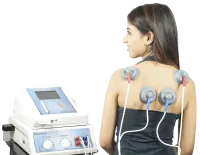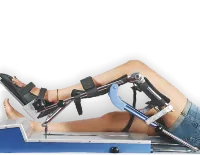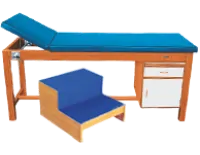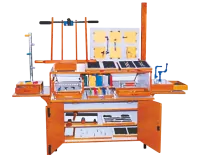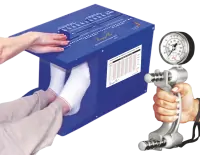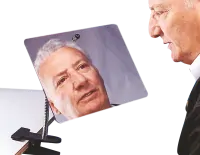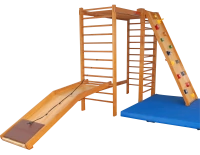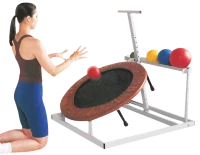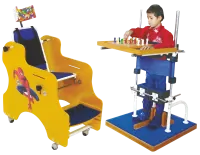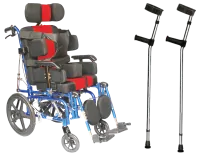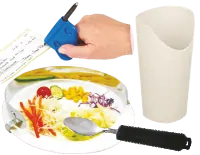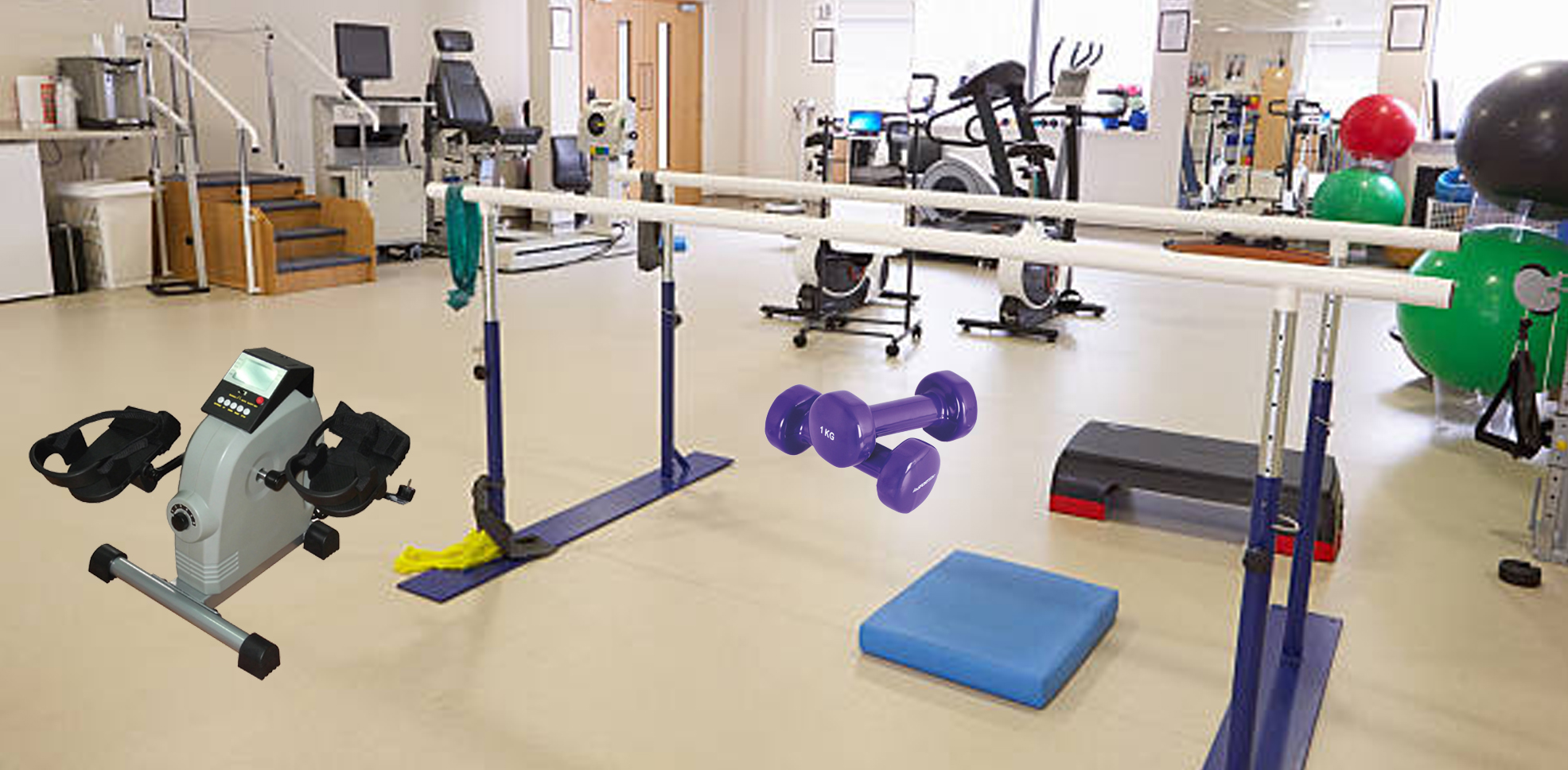4. Non-Slip Yoga Mats
A high-quality, non-slip yoga mat serves as your foundation for safe and effective rehabilitation exercises. The right mat prevents unwanted movement during floor-based activities, reducing injury risks and enhancing exercise effectiveness.
Key Features to Look for:
- 6mm thickness for optimal joint protection
- Textured surface for enhanced grip
- Moisture-resistant materials
- Easy-to-clean surfaces
- Eco-friendly options available
Your yoga mat becomes essential during:
- Balance exercises
- Core strengthening routines
- Stretching sequences
- Floor-based resistance training
- Bodyweight exercises
The best non-slip mats in 2025 incorporate advanced grip technology that adapts to your body temperature and moisture levels. These mats maintain their non-slip properties even during intense rehabilitation sessions, providing a stable platform for your recovery journey.
For rehabilitation purposes, select a mat with alignment markers - these visual guides help maintain proper form during exercises, particularly beneficial when working with resistance bands or performing bodyweight movements.
5. Stability Balls
Stability balls are important rehabilitation tools in 2025, providing flexible support for exercises that strengthen the core and improve balance. These versatile spheres come in different sizes (30cm, 45cm, 55cm, 65cm, 75cm, 85cm, 95cm, 120cm) to suit various body heights and exercise needs.
Key Benefits for Rehabilitation:
- Activates deep core muscles during seated exercises
- Improves posture through constant micro-adjustments
- Enhances proprioception and body awareness
- Provides low-impact support for spinal alignment
Effective Rehabilitation Exercises:
- Seated balance training
- Wall squats with stability ball support
- Bridge exercises for lower back strength
- Hamstring curls for leg muscle engagement
- Ab crunches with increased range of motion
The modern stability balls are designed to be safe for rehabilitation exercises. They have an anti-burst construction that can support up to 2000 pounds of static weight, ensuring durability and reliability during workouts. The textured surface of the balls prevents slipping, providing a secure grip for users. Additionally, their portable design allows for easy storage between sessions, making them convenient for both therapists and patients.
Many physical therapists incorporate stability balls into treatment plans for patients recovering from lower back injuries, joint replacements, and balance disorders.
6. Cardio Machines
Cardio machines are important tools for rehabilitation. They provide a controlled environment for improving cardiovascular fitness and joint mobility. Here are the most effective cardio equipment options for your rehabilitation journey in 2025:
- Low-impact, full-body workout
- Adjustable resistance levels for progressive rehabilitation
- Natural movement patterns that protect recovering joints
- Speed and incline customization for gradual progress
- Built-in heart rate monitoring
- Shock-absorption features for reduced impact
- Ergonomic back support
- Perfect for lower body rehabilitation
- Ideal for users with balance concerns or back issues
- Engages 86% of body muscles
- Adjustable resistance for controlled progression
- Smooth, fluid motion for joint mobility
These machines come with modern features such as digital progress tracking, Bluetooth connectivity, pre-programmed rehabilitation routines, real-time form feedback, and virtual coaching options.
The latest models in 2025 prioritize accessibility by incorporating wider platforms, enhanced stability features, and user-friendly controls. Additionally, many units now utilize AI-driven technology to adjust resistance levels based on your rehabilitation progress and recovery patterns.
7. Foam Rollers
Foam rollers are essential rehabilitation tools in 2025, changing the way you recover your muscles and improve flexibility. These cylindrical tools work through self-myofascial release, a technique that breaks down knots and tension in your muscles.
Key Benefits of Foam Rolling:
- Reduces muscle soreness after workouts
- Increases blood flow to targeted areas
- Improves range of motion
- Prevents injury by maintaining muscle health
- Releases trigger points in tight muscles
There are different types of foam rollers available at Sunrise Industries to suit your specific needs:
- Sunrise Rolls / Bolster
- Physio Roll
- Fit Ball Roller Ø 18 Cm. L. 75 Cm.
- Training Roll Ø 24 Cm. - L 70 Cm.
- Eva Foam Rolls Round
- Eva Foam Rolls Half Round
You can include foam rolling in your rehabilitation routine by doing specific exercises:
- Roll each major muscle group for 30-60 seconds
- Apply steady pressure on tender areas
- Move slowly across muscle fibers
- Maintain proper breathing throughout sessions
For the best results, use foam rollers before and after workouts, paying attention to areas that feel particularly tight or sore. This practice is especially beneficial when combined with other rehabilitation equipment like resistance bands and stability balls.
8. Medicine Balls
Medicine balls are a versatile rehab product in 2025, offering dynamic strength training options for both athletes and rehabilitation patients. These weighted spheres range from 2 to 25 pounds, allowing progressive resistance as you build strength.
Key Benefits:
- Develops explosive power through controlled throwing movements
- Enhances core stability with rotational exercises
- Improves hand-eye coordination through catch-and-throw drills
- Strengthens multiple muscle groups simultaneously
Popular Medicine Ball Exercises:
- Wall balls for full-body conditioning
- Rotational throws for core engagement
- Chest passes to build upper body strength
- Slam exercises for power development
- Russian twists for oblique targeting
The weighted design of medicine balls creates resistance in multiple planes of motion, making them ideal for sports-specific training and daily functional movements. You can incorporate these exercises into circuit training or use them as standalone power-building tools. The textured surface provides enhanced grip during intense workouts, reducing the risk of slippage during dynamic movements.
For rehabilitation purposes, lighter medicine balls help rebuild strength gradually while maintaining proper form and movement patterns. The varied weight options allow therapists to adjust resistance based on individual recovery progress and specific therapeutic goals.
Choosing the Right Rehab Equipment for Your Needs
Selecting rehabilitation equipment requires a personalized approach based on your specific circumstances. Here's what you need to consider for an effective selection process:
1. Physical Condition & Goals
- Current injury or condition severity
- Target areas for rehabilitation
- Short-term and long-term recovery objectives
- Medical professional recommendations
2. Space & Storage
- Available workout area dimensions
- Storage options when equipment isn't in use
- Portability requirements
- Multi-functional equipment possibilities
3. Budget Considerations
- Initial investment capacity
- Long-term value assessment
- Maintenance costs
- Potential insurance coverage
4. Practical Aspects
- Your experience level with exercise equipment
- Required assembly or setup
- Maintenance requirements
- Safety features
A strategic approach to selecting rehab products starts with consulting your healthcare provider. They can guide you toward equipment that aligns with your recovery plan. You'll want to prioritize quality over quantity - start with essential pieces that serve multiple purposes rather than filling your space with equipment you might rarely use.
Remember to factor in your lifestyle and daily routine when choosing equipment. The best rehab tools are the ones you'll actually use consistently. Consider starting with versatile basics like resistance bands or stability balls, then expanding your collection as your needs evolve.
FAQs (Frequently Asked Questions)
What is rehabilitation equipment and why is it important?
Rehabilitation equipment refers to tools and devices used to aid recovery processes for individuals recovering from injuries or surgeries. Its importance lies in facilitating effective rehabilitation, improving mobility, strength, and overall physical function, which are crucial for regaining independence and quality of life.
What key features should I look for when choosing rehab equipment?
When selecting rehab equipment, consider durability, versatility, and user-friendliness. Durable equipment ensures longevity and safety during use. Versatility allows for a variety of exercises to cater to different recovery stages. User-friendly features accommodate various fitness levels, making it accessible for everyone.
What are some top rehabilitation products recommended for 2025?
Some top rehabilitation products for 2025 include resistance bands for strength training, adjustable dumbbells for varying weight needs, kettlebells for core stability, non-slip yoga mats for bodyweight exercises, stability balls for balance training, cardio machines like treadmills and rowing machines, foam rollers for flexibility improvement, adjustable weight benches for upper body workouts, and medicine balls for power-building exercises.
How do resistance bands benefit rehabilitation exercises?
Resistance bands are beneficial in rehabilitation as they provide adjustable resistance levels that can be tailored to individual strength needs. They help improve muscle strength, flexibility, and coordination while being lightweight and portable, making them ideal for home use or therapy sessions.
Why are cardio machines important in a rehabilitation program?
Cardio machines such as elliptical machines, treadmills, recumbent bikes, and rowing machines play a crucial role in rehabilitation by improving cardiovascular fitness. They aid in enhancing endurance and stamina while being low-impact options that reduce strain on recovering joints.
How can I choose the right rehab equipment based on my needs?
Choosing the right rehab equipment involves considering factors such as your specific recovery goals, individual preferences, available space at home or in therapy settings, and the types of exercises you plan to perform. A personalized selection process ensures that the chosen equipment effectively supports your rehabilitation journey.







